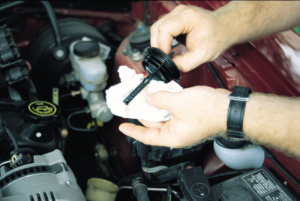Information provided by AAA’s Discount Partner: NAPA Auto Parts
Your car is a symphony of mechanical pieces that move under extreme temperatures and brute force. Car fluids provide the necessary lubrication for proper heat dispersion so that those moving pieces operate swiftly without frictional damage. Oils, water, coolants and fuel are all types of fluids to check in a car that keep its components running at high performance. No matter if you drive a heavy-duty truck, SUV or electric car, it’s important to ensure your fluid levels are maintained throughout the vehicle’s lifespan.
One type of fluid maintenance with which you’re probably familiar is the well-known oil change. But, that isn’t all you need to monitor for clean driving performance; there’s also coolants and antifreezes, transmission fluids, brake fluids, power steering fluids, windshield washer fluids, cleaners and more. Your fluid change frequency will depend on a couple of things. Do you hit the pedal hard, pushing your vehicle to the max? Or, are you mostly a commuter? Do you live in a harsh climate? Is your vehicle electric? If you’re struggling to assess what exactly needs to be changed and when, you can always start by asking the experts at your local AAA Approved Auto Repair Facility.


